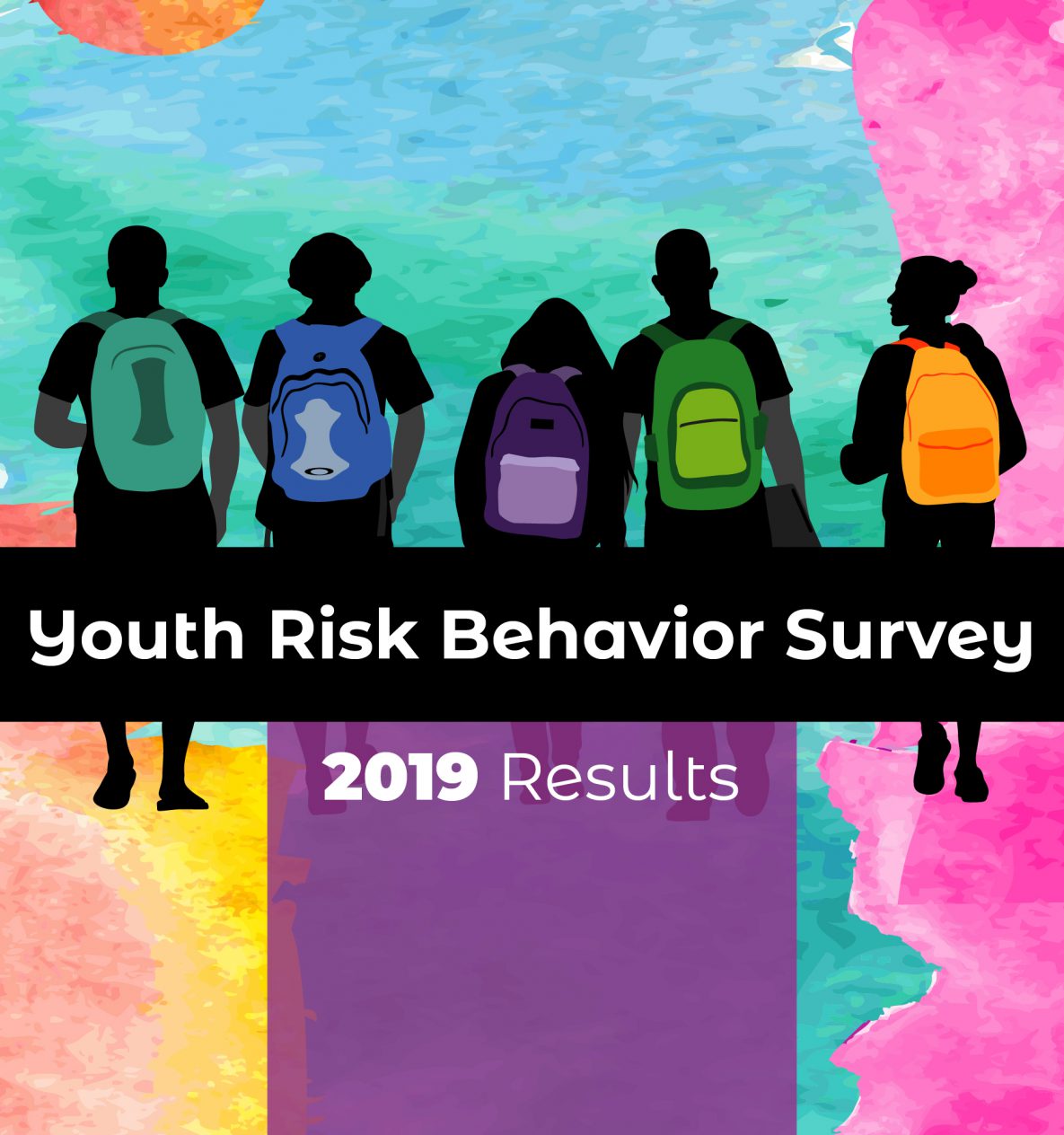CDC releases 2019 Youth Risk Behavior Survey Results
Updated August 20, 2020
- The 2019 YRBS results present a promising picture for some behaviors and experiences among high school students; however, other areas reveal that teens are still engaging in behaviors that put them at risk.
- While these health risk behaviors vary by sex, race/ethnicity, sexual orientation and grade, the 2019 YRBS results show that there is more work to do to help all teens create lifelong healthy behaviors.
The adolescent years are an ideal time to develop healthy behaviors. In the United States, schools play a central role in promoting the health and safety of young people. Each day, the nation’s schools provide an opportunity for roughly 56 million students to learn how to stay healthy and practice skills to help establish lifelong healthy behaviors. Unhealthy behaviors, or risk behaviors, are often established during childhood and persist into adult¬hood. However, they are largely preventable.
YRBS Results
CDC’s Youth Risk Behavior Surveillance System monitors priority health risks and experiences among high school students across the country. The Youth Risk Behavior Survey (YRBS) results help in understanding risks that contribute to the leading causes of death and disability among youth and young adults.
This YRBS report also provides an important pre-COVID snapshot of the health of American youth. The 2019 YRBS results will serve as a baseline for years to come as we understand the impact of COVID and help adolescents recover from the effects, both mental and physical, of the COIVD 19 pandemic.
Sexual Risk Behaviors
In the 2019 results, the percentage of high school students who have ever had sex declined from 46% in 2009 to 38% in 2019. The percentage of students who had four or more sexual partners also declined from 14% in 2009 to 9% in 2019. Unfortunately, condom use among students having sex also decreased from 61% in 2009 to 54% in 2019, presenting a serious health risk for STDs, including HIV. This decline follows a period of increased condom use throughout the 1990s and early 2000s.
Drug Use
The 2019 YRBS results also found that 7% of U.S. high school students reported current prescription opioid misuse, and 14% reported misusing prescription opioids at least once in their lifetime—a behavior that can lead to overdose and other poor health outcomes. Students who reported current prescription opioid misuse, also commonly reported current use of other substances including marijuana and alcohol, as well as current binge drinking.
Violence and Mental Health
Other factors have been shown to be linked to sexual risk behaviors that can lead to HIV and STDs. These include experiences of violence and poor mental health. Nationally, 25% of students reported being bullied, 8% students reported physical dating violence, and 11% reported sexual violence. During 2019, 19% of students reported seriously considered attempting suicide, 16% made a suicide plan, and 9%made a suicide attempt. Attempting suicide was highest among females (11%), black non-Hispanic students (12%), and students who identified as lesbian, gay, or bisexual (23%.)
The 2019 YRBS Results

Available materials include —
- 2019 YRBSS Surveillance Supplement
- Updates to Youth Online, an interactive data exploration tool
- NEW: YRBS Explorer
- Comparisons of state or local results with national results
- Public use national data sets and technical documentation
Social Media
- Twitter: @CDC_DASH
- Pinterest: CDC Healthy Youth
What YRBSS Monitors
CDC’s YRBSS is the only surveillance system designed to monitor a wide range of priority health behaviors and experiences among representative samples of high school students at the national, state, and local levels.
National, state, and local surveys are conducted every 2 years among high school students throughout the United States. More than 13,000 U.S. high school students participated in the 2019 national YRBS. The report includes national YRBS data and data from surveys conducted in 44 states, 28 large urban school districts, 3 territories, and 2 tribal governments.
What CDC Is Doing to Help Reduce the Prevalence of Health Risks among Students
While schools are critical in helping students reduce health risks, families and communities have an equally important role to play in making sure the nation’s youth stay healthy now and into adulthood. Research shows that schools and families can protect against risks by increasing connectedness. Families can do this by staying engaged in their adolescents’ daily lives and talking to their adolescents about their values. Schools can do this by building environments that are safe and provide connectedness for all students, delivering evidence-based health education with a focus on building skills for healthy decision-making, and connecting students to necessary health services.

We all have a role to play in helping youth become healthy, thriving adults. Families, schools, community organizations, and youth must work together to help address and reduce risks to the health of our nation’s young people.
CDC and partners work on multiple levels to address these protections – including funding, implementing, and evaluating programs that address many of these risks and protective factors. CDC works with other federal agencies, national nongovernmental organizations, and departments of education, health, and social services to —
- Identify and monitor critical health events, youth behaviors, and related school policies and programs.
- Summarize and apply research findings to increase the effectiveness of interventions.
- Provide funding and assistance to help plan, implement, and evaluate interventions that reduce risks and promote healthy practices.
- Monitor the progress made toward achieving national health objectives.






















.png)











No hay comentarios:
Publicar un comentario